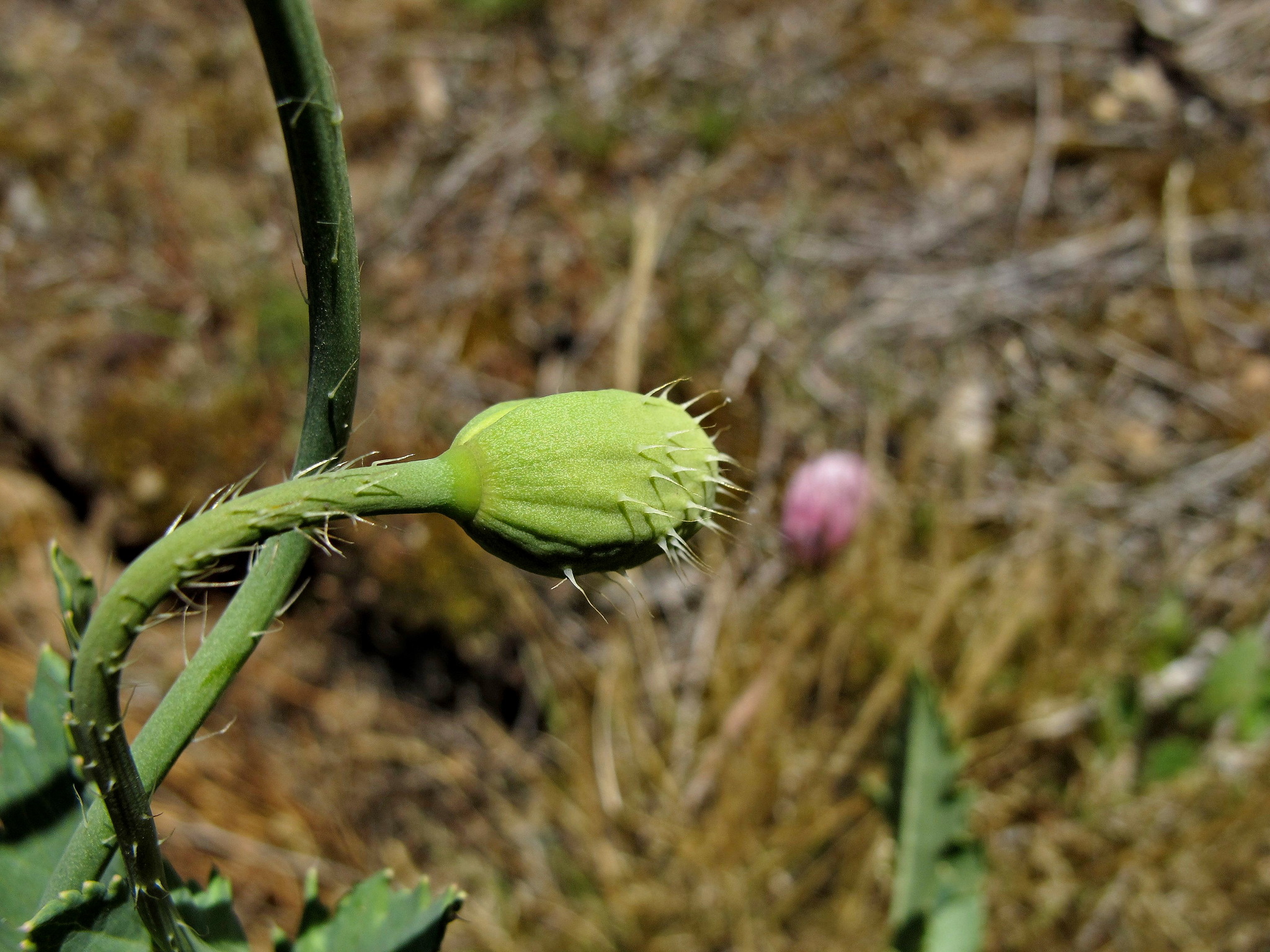
Ancient Latin name from pappa—milk, referring to the milky sap of some species.
Annual, biennial or perennial herbs with yellow or milky sap and with green parts generally hairy or bristly. Leaves lobed or divided. Flowers solitary on long stalks, often drooping, at least when in bud. Sepals 2, often soon shed. Petals 4(5-6) mostly pink, yellow, orange or red, the red ones often with a black patch at the base. Stamens numerous. Ovary superior. Fruit an obovoid to spherical capsule with a conical or flat disk on top; seeds numerous, shed through pores below disk (or the whole disk sometimes shed).
Several poppies have become naturalised in the wild in SE Australian states. These include P. aculeatum; P. dubium (sometimes found in waste places, cemeteries etc.); P. hybridum (Rough-headed Poppy, an annual of wheat districts and possibly poisoning livestock); P. somniferum and P. rhoeas. P. rhoeas, Flander's Poppy, is quite rare but the others are quite widespread. With the rare exception of P. somniferum, none of these are cultivated in gardens.
Seed.
Two species, P. somniferum and P. orientale, are the source of morphine and related alkaloids used in medicine.
Yellow, milky sap; distinctive flowers; large, flat, star-fish-shaped stigma extending over the top of the capsule.
About 80 species mostly from Europe but also Asia, S Africa, Australia and W North America.
Cullen (1968), Veselovskaya (1973), Kadereit (1986a, b, 1987, 1988a, b, 1993), Grey-Wilson (1993).
Source: (1997). Papaveraceae. In: . Horticultural Flora of South-eastern Australia. Volume 2. Flowering plants. Dicotyledons. Part 1. The identification of garden and cultivated plants. University of New South Wales Press.
